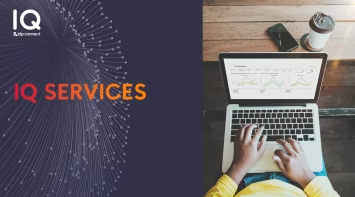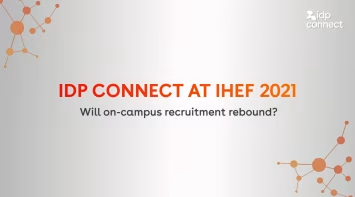Introduction
Diversification has long been a cornerstone of international education, and its importance has become more central to sector-wide recovery priorities in this post-pandemic environment. For many years, diversification commonly referred to institutions widening their recruitment efforts to target different source markets other than those that provided the largest volume of international students. While this interpretation of diversification still holds true, diversification across a range of pillars is proving to be equally relevant. In the Australian Strategy for International Education 2021-2030, the Australian Government Department of Education outlines that diversification strategies are needed not only in source market portfolios, but also across programs and modality.
As the Government embarks on a potential refresh of the Strategy to 2030, it is timely that we review education sector priorities. In this article, we will explore the key areas for diversification in international education, how pursuing diversification can benefit higher education providers, and most importantly how IDP’s suite of products, as well as our services and solutions can help your institution achieve its diversification goals.
Source Markets
While the international education sector displays considerable strength in its ability to overcome language, cultural, and geographical barriers to achieve common goals, our internationality is not always as diverse as we would like it to be. Partly owing to their massive populations, India and China have long been our largest source of students. However, relying too heavily on these established markets can increase vulnerability when market shocks occur. It also means the international and domestic student experience doesn’t reach its full potential if a limited range of cultural perspectives and insights are present on campus.
The aforementioned ‘market shocks’ have been relatively frequent as of late. Of course, the most notable and memorable was the COVID-19 pandemic, which impacted all source flows of international students. The delayed reopening of China’s borders coupled with policy changes regarding online degree recognition created variability in outbound student flows. IDP IQ Demand+ data showed demand from Chinese students for overseas study has been uneven for many institutions. While this was a definitive shock to the international education sector, it also presented an opportunity.
As source market demand from China dipped, IDP data showed the share of demand from Indonesia steadily increased, so much so that Indonesia had the highest share of demand for Australian higher education institutions as of December 2023, just slightly ahead of the long-established market of India. Our dataset also shows demand from Vietnam has steadily increased since October 2023, with this populous Southeast Asian market boasting the third-highest share of demand for Australia. That said, further diversification efforts, not only across new markets but in new regions across China and India, are becoming increasingly necessary. An example of this can be found in our Understanding India report.
Modality Diversification
Recent disruptions to the global community have also changed the manner in which institutions deliver education to an international cohort, particularly an international cohort whose decisions are becoming influenced by high inflation and cost of living pressures. The need to diversify the modality of international education was highlighted in the Government’s Strategy for International Education. With the traditional, “premium” onshore learning experiences becoming less affordable for students around the world, the Australian Department of Education indicated it would work to achieve better recognition of the benefits of education services and programs delivered offshore.
These alternative, offshore modes include Transnational Education (TNE), and online/hybrid education options. While the latter mode involves international students undertaking their education through their chosen institution’s online portal, TNE involves the complete delivery of international education in a student’s home country, often via a partnership between a domestic institution and an overseas one. Data from IDP’s Emerging Futures 4 survey from August 2023 showed preference for this form of local, campus-based study in a student’s home country had grown from 10% in 2021 to 17% in 2023.

Monash University opening the first foreign branch campus in Indonesia in 2022 is a prime example of the sector’s recent investment in offshore delivery, as is Western Sydney University opening its first international campus in Indonesia in November 2023 and Deakin University doing the same in India in January 2024. These recent offshore campus investments are in addition to long-standing branch campuses established a decade or more prior, including RMIT in Vietnam, Monash and Swinburne in Malaysia, and several in Singapore to name a few.
While Australia had certainly adopted offshore modes of education in pre-pandemic years, the pace of offshore delivery has clearly hastened in recent times. However, not every alternative mode of education is focused on offshore delivery. In 2018, Victoria University adopted the ‘Block Model’ which gives students the option of taking one course at a time during an intense, four-week ‘block’. Not only did this model help to cut the first-year fail rate by 40%, but it also benefited international students studying abroad by delivering their education in a more compressed and focused format. Delivering education through blocks, online portals, offshore campuses, or in collaboration with an overseas institution will broaden the potential student pool by offering more cost-effective pathways to a chosen institution and expand the institution’s brand.
Program/Course Diversification
Diversification efforts don’t just benefit institutions and their international cohorts but can benefit destination markets as a whole. This is particularly true for the types of programs institutions promote and recruit into. According to IQ Demand+ data, Health and Medicine has the highest demand from students looking to study in Australia, or with Australian institutions. This is followed further behind by demand for Business and Administrative Studies. While the popularity of these study areas means their respective industries in Australia have access to a reliable workforce, it also means other crucial areas of the economy continue to be left in the dark.
According to the Strategy to 2030, enrolments in other key sectors like maths, engineering, and technology are falling well below the OECD (Organisation for Economic Co-operation and Development) average. So, how can institutions diversify their program portfolio and incentivise students to enrol in areas of noted skill shortage? One of the primary aims in the Strategy to 2030 to “improve education provider’s understanding of Australia’s future skill needs”. But what other tools are available to help institutions achieve not just their program diversification goals, but their modality and source market diversification goals as well?
IQ Solutions
IDP’s IQ tools and services are data-driven and designed to help institutions hit their recruitment and marketing targets. Our three key services include:
IQ Subscription – providing self-serve real-time data and analytical tools that offer unparalleled insights into students' study intentions up to two years before enrolling.
IQ Analytics – equipping client institutions with in-depth reports from our sector and data experts to enhance the subscription services, ensuring our clients receive the most comprehensive insights.
IQ Consultancy – delivering customised, full-funnel strategic analysis and solutions using our complete range of unique data sources, analytics, and expertise.
Our expert IQ team are the key drivers behind these services. Informed by on-the-ground intelligence from our counsellors across the globe, as well as real-time data sets from the IQ Demand+ dashboards, our IQ team can help to make your institution’s branding more competitive and attractive to the most suitable students. This in turn can help to improve your source market, modality, and program diversification. IQ Benchmarking also plays a prominent role in our services, giving our IQ team the ability to compare your institution’s recruitment and marketing efforts with that of other institutions, and helping you to adjust accordingly.
Where diversification strategies are geared towards your institution’s program portfolio, our real-time data enables institutions to see which programs students have explored and can help target these specific students, broadening your program portfolio. Similarly, our data-driven insights can help your institution understand demand for different forms of delivery, including TNE and online learning, and help your institution to diversify and adjust to meet growing demand.
Conclusion
Diversification is a pillar of Australia’s international education strategy, and the recruitment strategies of higher education providers will be integral in helping the country to answer the challenges of our complex and dynamic sector. So, whether your institution is looking to broaden its source market portfolio, expand its delivery modes, or attract more students to under-skilled programs, or all of the above, IQ products and services are the best way for your institution to make data-informed decisions and achieve its recruitment goals.
To learn more about how your institution can kickstart its diversification strategies, contact our client team and arrange a demo today. And for more information on our suite of IQ services, download our media pack below.
You might like...

International Fees and Course Pricing
Is the cost of living combined with rising international fees driving students to other destination markets?

Artificial Intelligence and IDP – Transformative Technology with a Human Stop Button
Understanding how we can benefit from AI but always with humans in control

IQ – Helping Partners Achieve their Goals with IDP Data Intelligence and Analytics Services
IQ solves the challenges faced by institutions using data-centric expertise.



